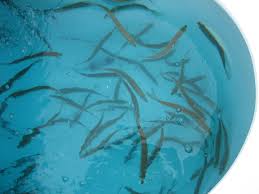
So many times I run into anglers telling me how they skunked on their last trip. ''But I don't understand, we had everything, the latest electronics, rods and reels, award winning lures, I guess fish weren't active'' they say. But at the same time, they noticed that not too far from their $40,000 boat, there was a rental boat with parents and kids using basic equipment and they were catching plenty! Tough for the ego (and anglers usually carry big ones). Come to think of it, our ''all pros'' did realize that the boat rental place do sell: Minnows, crawfish, worms, ahhh! Now we’re on to something.
Most of us were taught to fish by our elders and back in the days, artificial lures weren't as ''high tech'' as they are now, still, my dad and yours always managed to have decent results using bait such as minnows and worms. Now, what if we bring a little craftiness into an already proven method. Here's a few set-ups that you might want to keep in your back pocket in case you decide to give it a shot.
First and foremost, you have to get the right terminals for different presentations : Hooks, sinkers, swivels and floats in different sizes are your key to success, but not just ''dollar store'' stuff, no! I'm talking balsa floats, Compac ball bearing swivels and Kamakazi hooks.
Basic set-ups should always be similar, float or sinker must be placed on the main line with a swivel underneath. On that swivel you tie a fluocarbon ( I prefer 15-20 inches ) and finishing off with the hook. Species, areas and bait will dictate how far from the bottom you want your presentation. For example, rarely I'll keep a minnow to close to bottom, on the other hand, worms, crawfish and leeches work usually better laying on the bottom. Therefore, in a ''no current'' situation, I like using floats or just go with a sliding sinker, using the swivel to stop it from sliding all the way to the hook.
Finally in a ''cast and retrieve'' method you might want to try the effective ''drop shot'' presentation. Regular spinning rod and reel will do the job perfectly and unlike soft plastic fishing, I prefer to go with a rod that has a bit more of a light action. I had very good results with Streamside's predator SPF-701ML but for pike hunting, I suggest upgrading to something with more muscle like the SPF-701MH or the SPF-802MH.
Accessories are important for this type of fishing : gloves, pliers, clippers, scissors and landing nets must follow you everywhere. They allow you to perform quicker release without arming the fish and it is very important not to be afraid to cut the line if the fish is hooked too deep. Studies have shown that a fish who swallowed a hook has practically no chance to survive if you try to pull it out. On the other hand if you cut the line and let the fish metabolism do the rest, the chances go 70% up if the conditions are favorable. So now you have it, always remember to throw a selection of natural baits in your cooler next to sandwiches and cold drinks, I'm sure they can make the difference between a good or bad day. Have yourself a great season!





